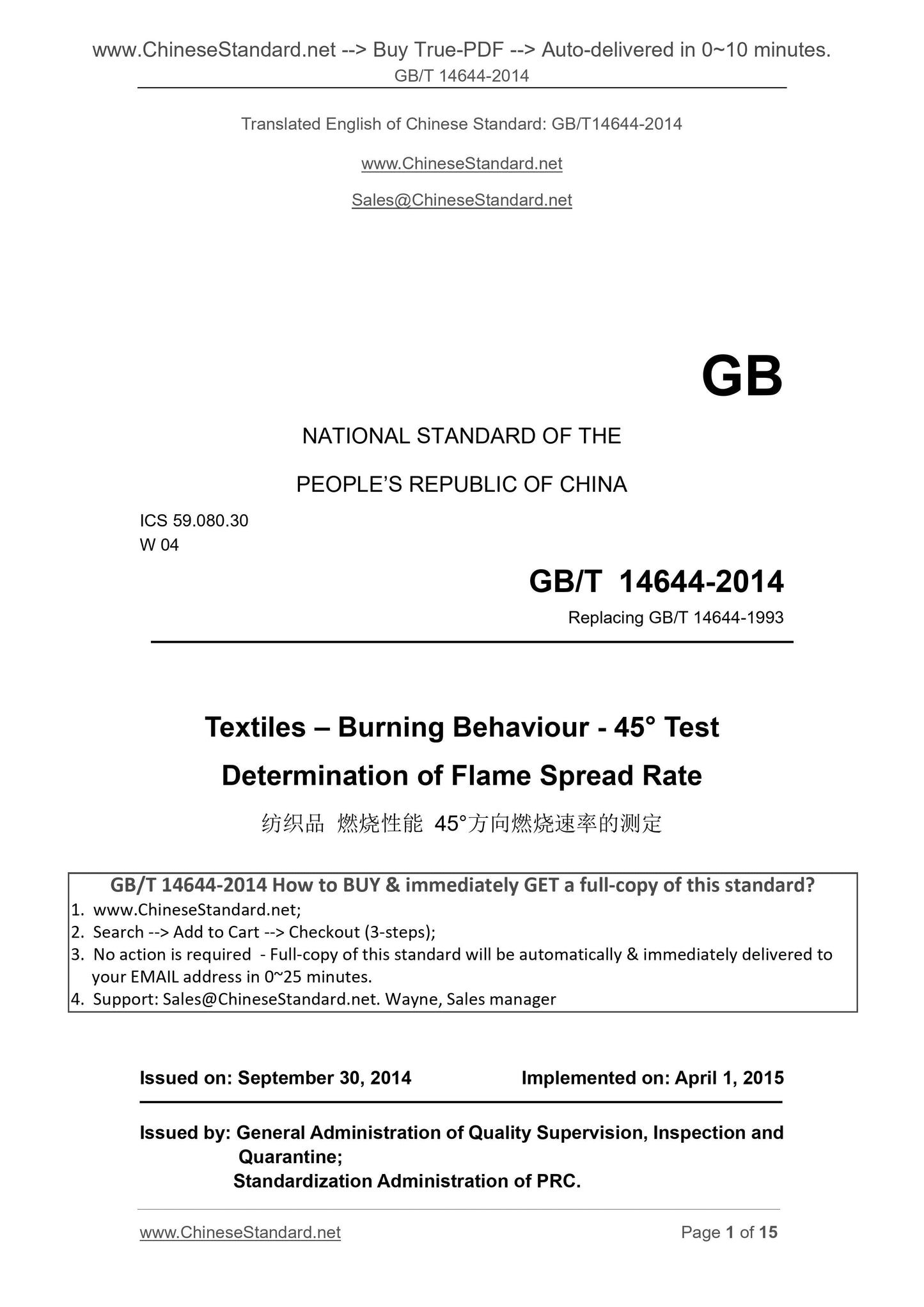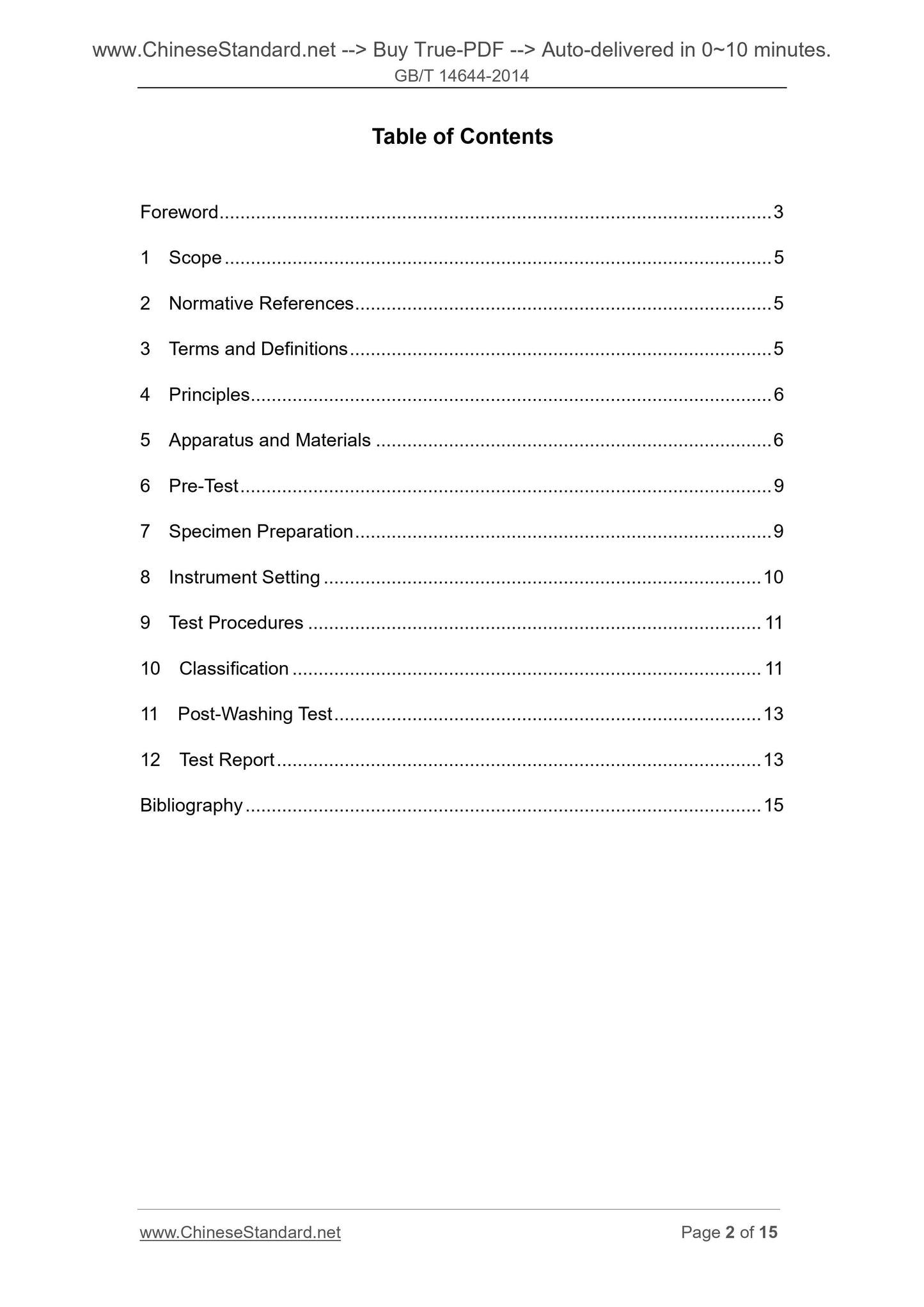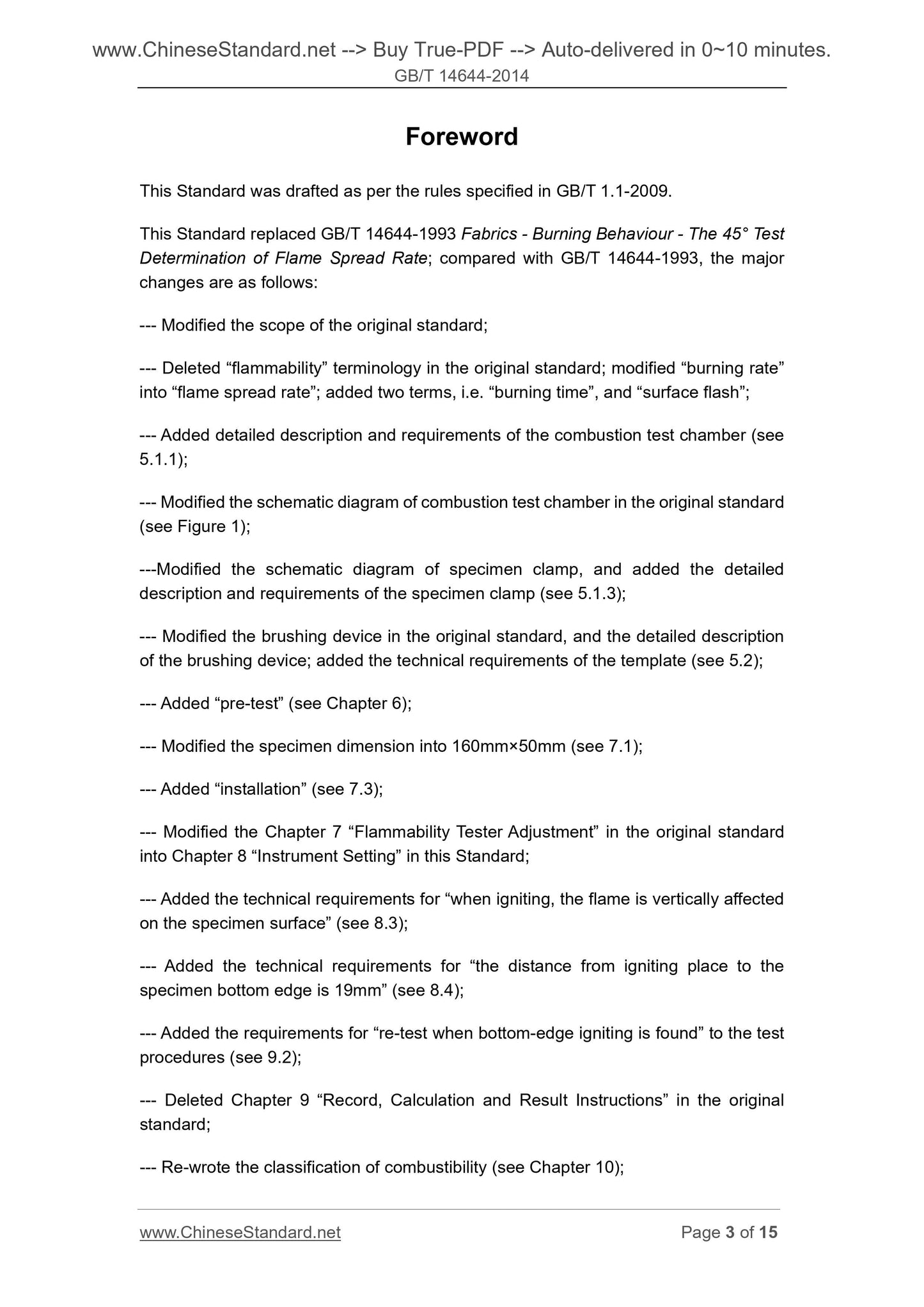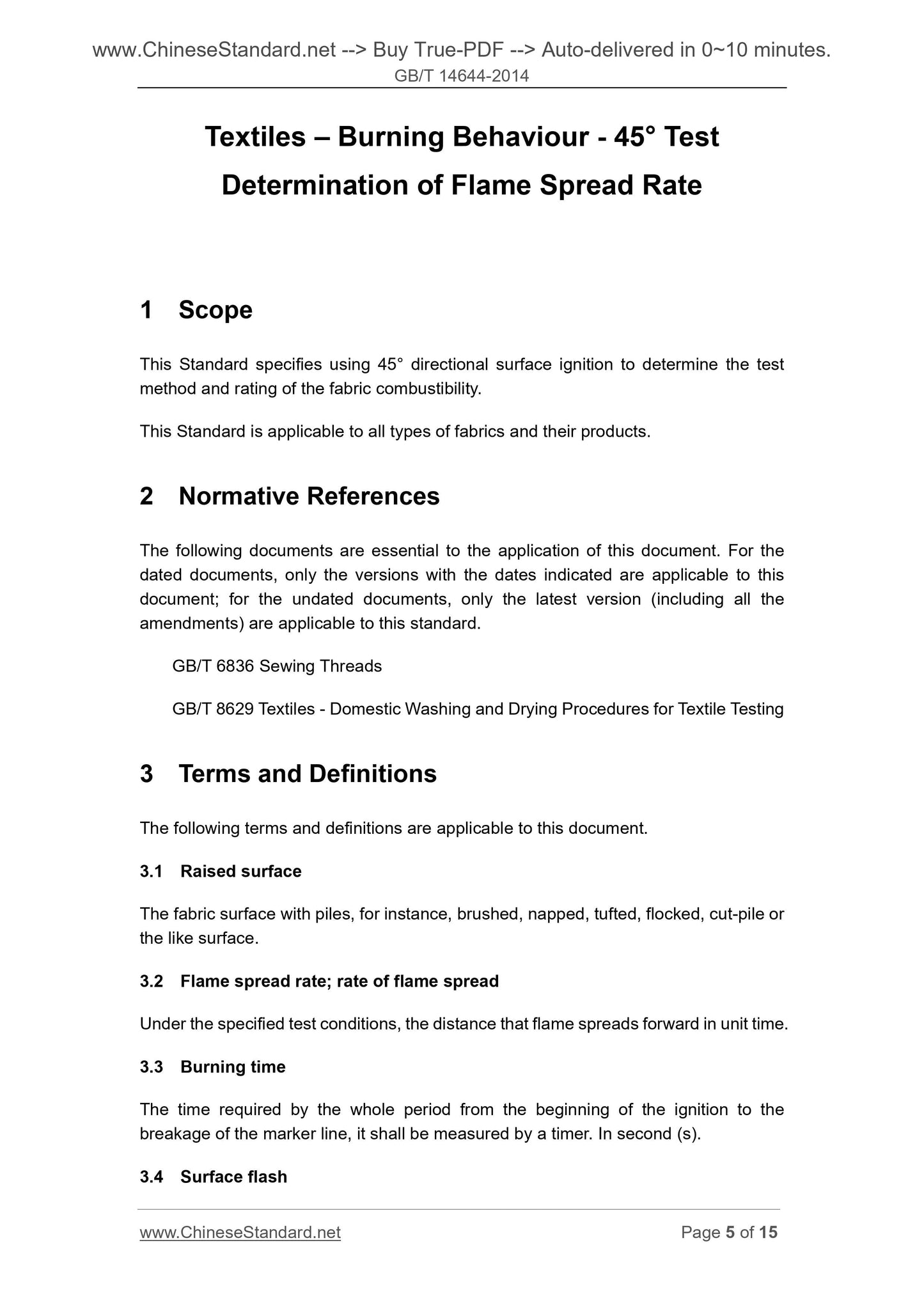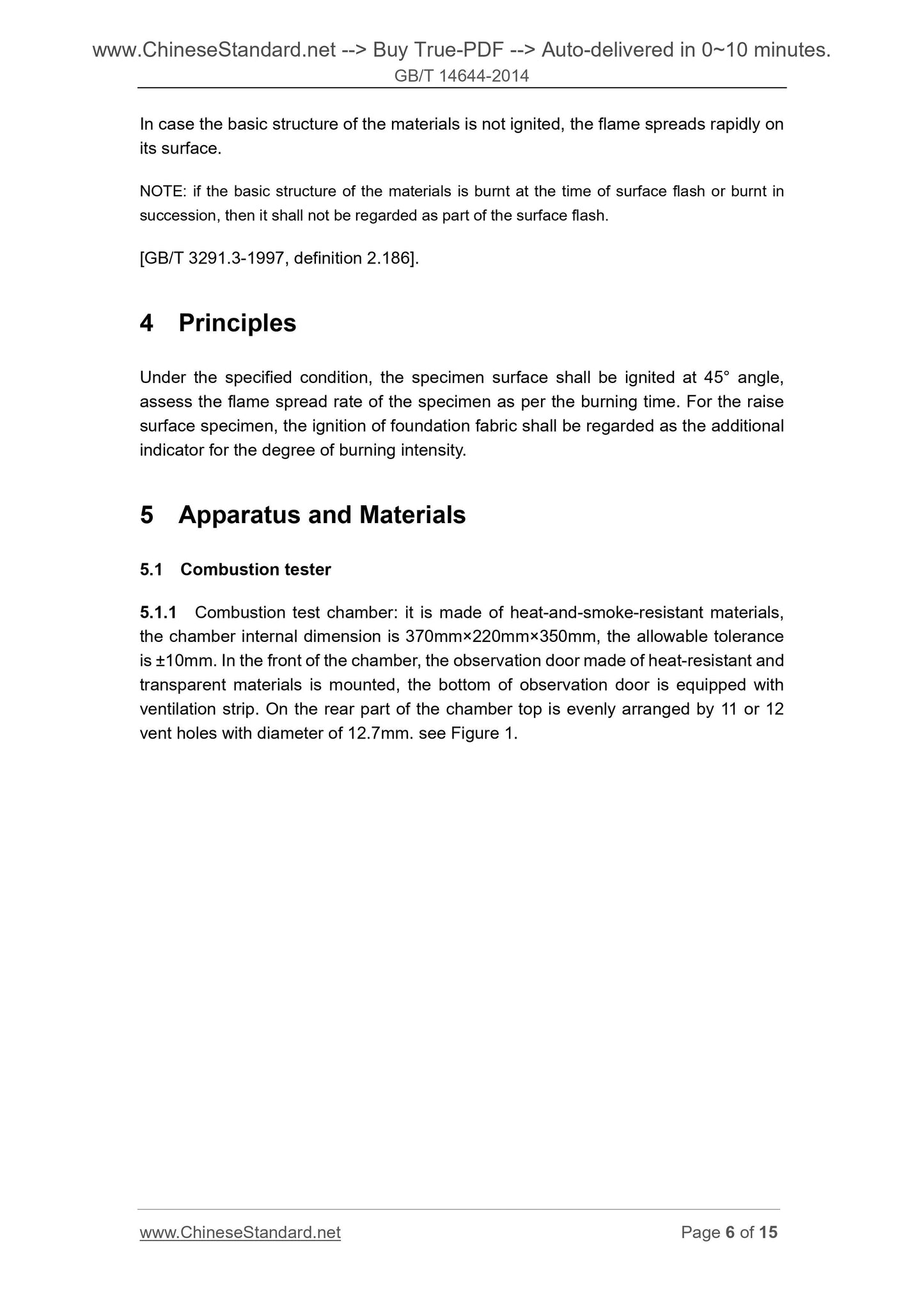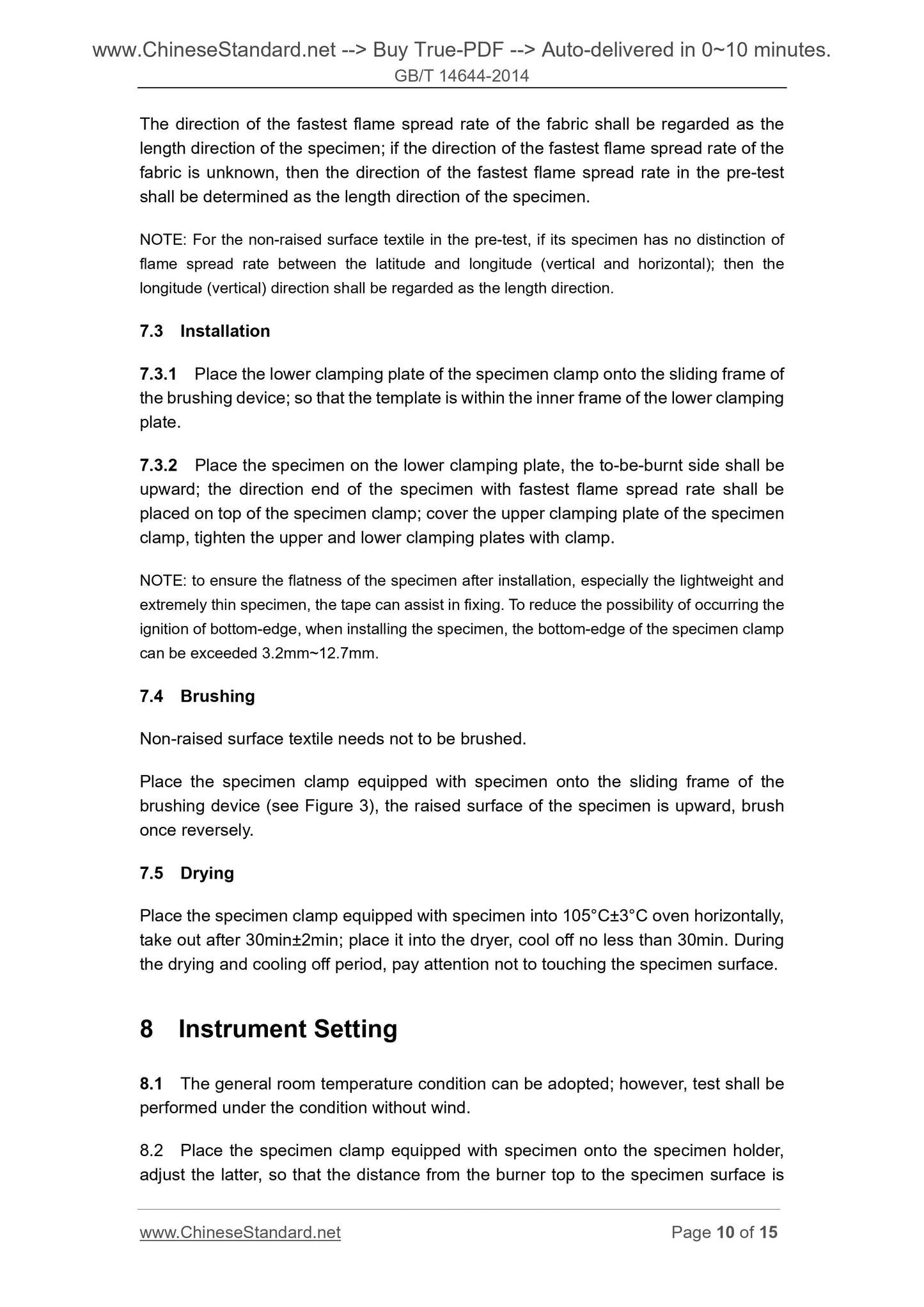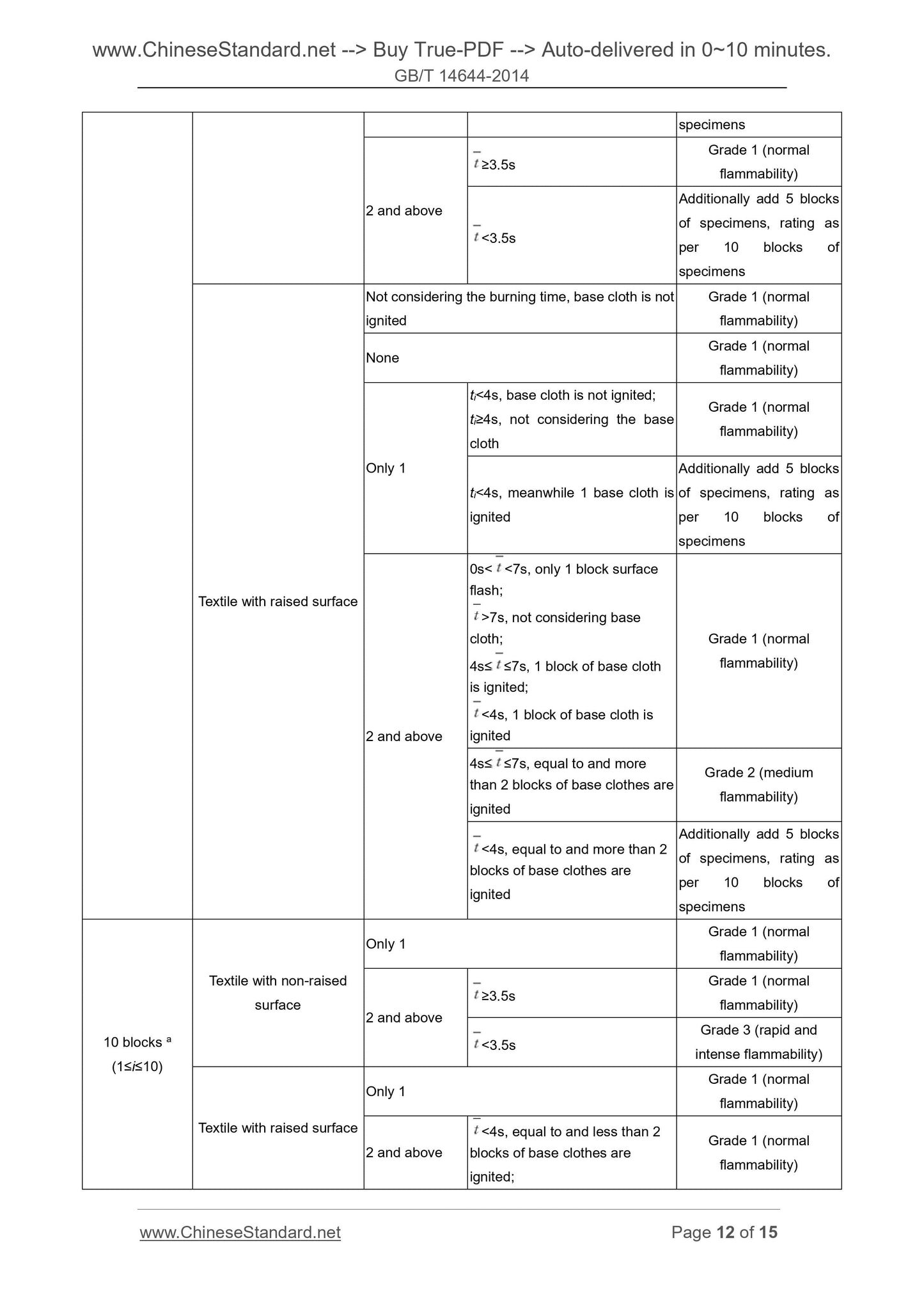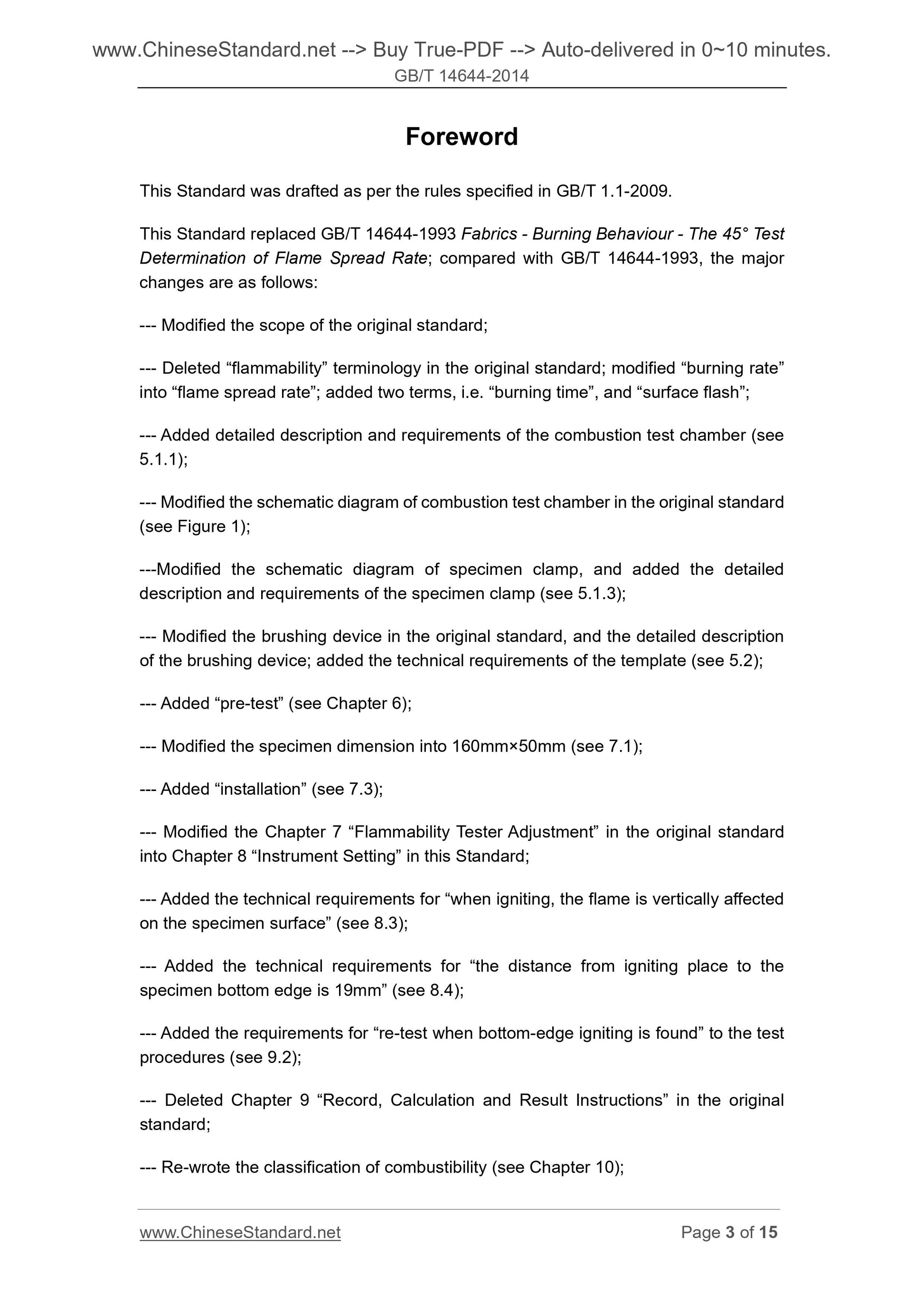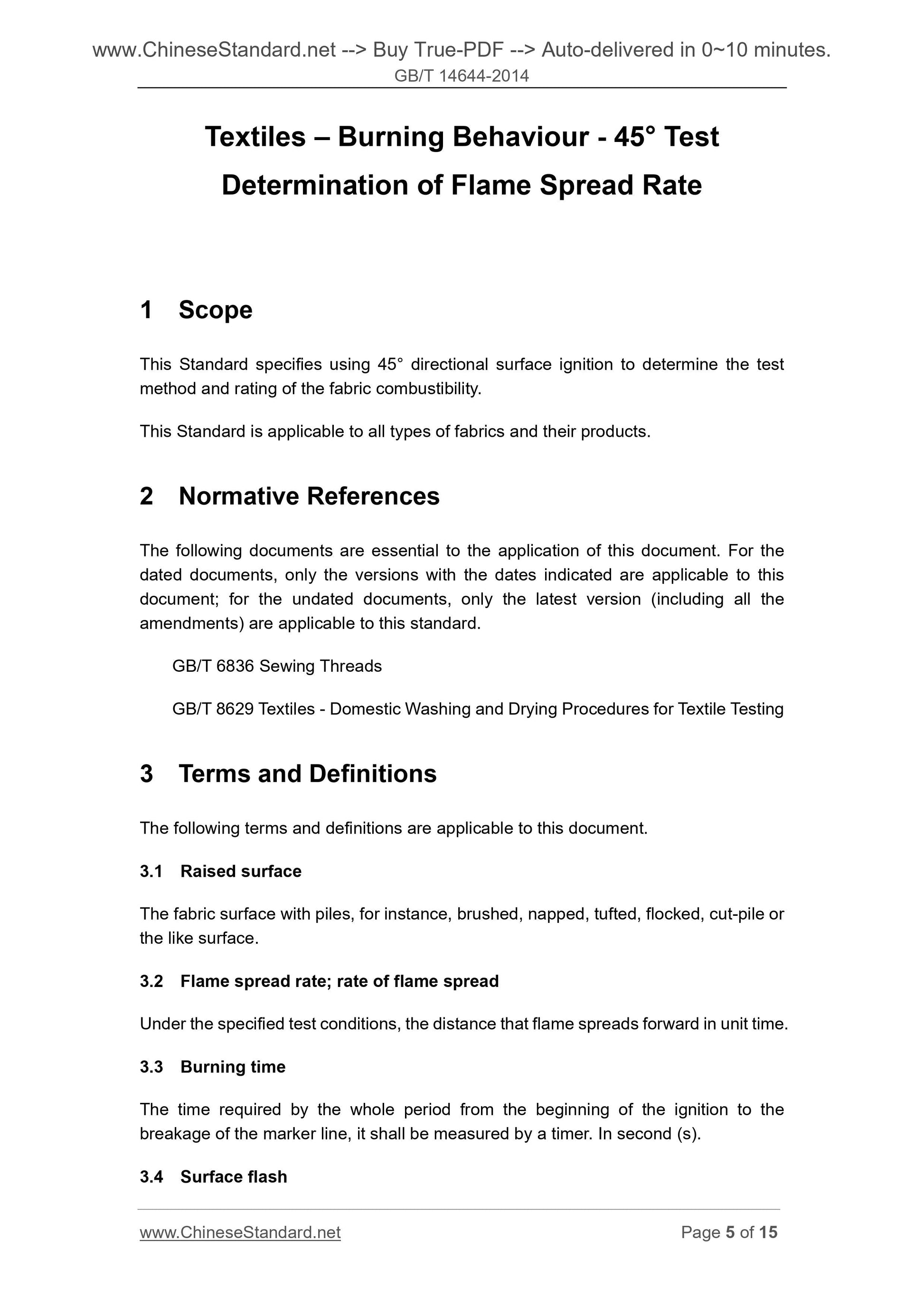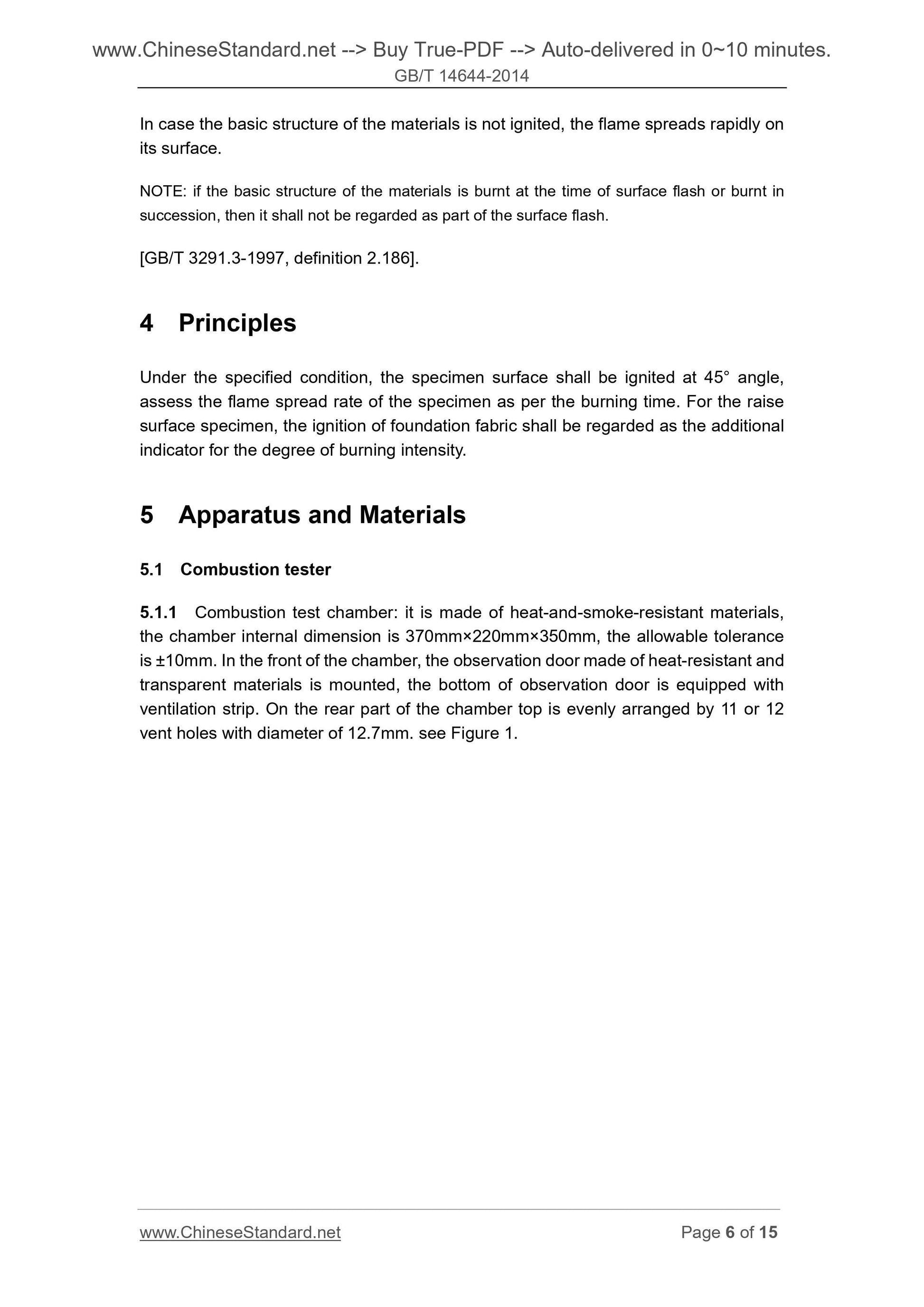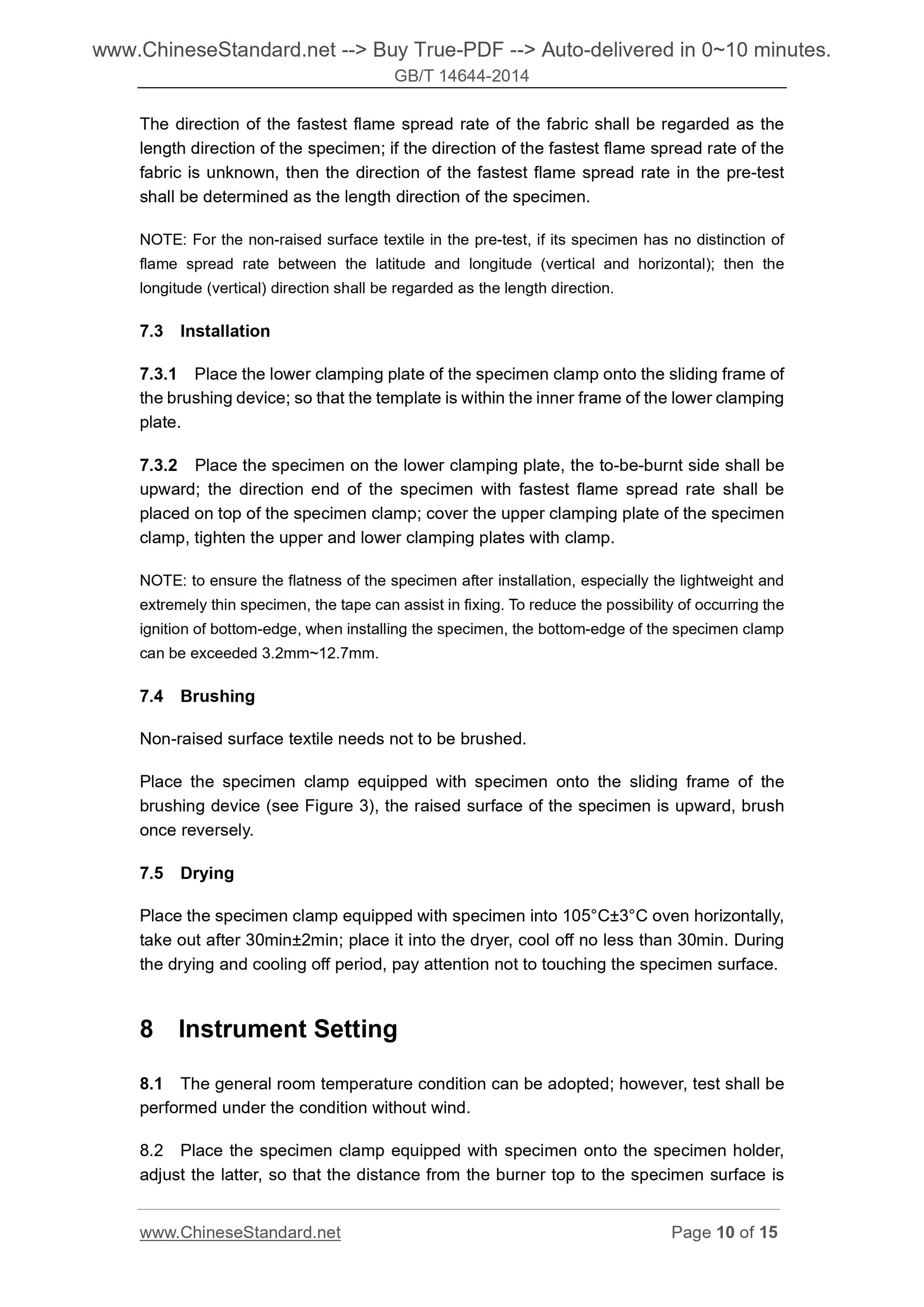1
/
of
7
www.ChineseStandard.us -- Field Test Asia Pte. Ltd.
GB/T 14644-2014 English PDF (GB/T14644-2014)
GB/T 14644-2014 English PDF (GB/T14644-2014)
Regular price
$85.00
Regular price
Sale price
$85.00
Unit price
/
per
Shipping calculated at checkout.
Couldn't load pickup availability
GB/T 14644-2014: Textiles - Burning Behaviour - Test Determination of Flame Spread Rate
Delivery: 9 seconds. Download (and Email) true-PDF + Invoice.Get Quotation: Click GB/T 14644-2014 (Self-service in 1-minute)
Newer / historical versions: GB/T 14644-2014
Preview True-PDF
Scope
This Standard specifies using 45° directional surface ignition to determine the testmethod and rating of the fabric combustibility.
This Standard is applicable to all types of fabrics and their products.
Basic Data
| Standard ID | GB/T 14644-2014 (GB/T14644-2014) |
| Description (Translated English) | Textiles - Burning Behaviour - Test Determination of Flame Spread Rate |
| Sector / Industry | National Standard (Recommended) |
| Classification of Chinese Standard | W04 |
| Classification of International Standard | 59.080.30 |
| Word Count Estimation | 10,128 |
| Date of Implementation | 4/1/2015 |
| Older Standard (superseded by this standard) | GB/T 14644-1993 |
| Quoted Standard | GB/T 6836; GB/T 8629 |
| Regulation (derived from) | People's Republic of China Announcement of Newly Approved National Standards 2014 No. 22 |
| Issuing agency(ies) | General Administration of Quality Supervision, Inspection and Quarantine of the People's Republic of China, Standardization Administration of the People's Republic of China |
| Summary | This Standard specifies the direction of the surface using 45 �� Test Method for ignition combustion properties of the fabric, as well as staged combustion performance. This Standard applies to all types of fabric and its products. |
Share
